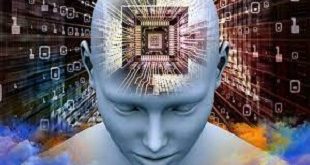Introduction
Generative Artificial Intelligence (Generative AI) has emerged as a powerful force in the world of technology and creativity. This transformative technology, often referred to as the offspring of machine learning and neural networks, has enabled machines to generate content that mimics human creativity, from art and music to text and more. While Generative AI holds immense promise, it also raises critical questions and concerns. How do we navigate the vast potential of Generative AI while avoiding the pitfalls and ethical dilemmas it presents? In this article, we will delve into the complexities of Generative AI and explore the ways we can effectively navigate this ever-evolving landscape.
I. Understanding Generative AI
Generative AI, at its core, involves the use of artificial neural networks to create content that is indistinguishable from human-generated content. These neural networks, particularly the generative models like GPT (Generative Pre-trained Transformer), use deep learning techniques to produce text, images, music, and more. The concept of Generative AI is rooted in a fundamental understanding of data, patterns, and creative processes. This technology has opened up exciting opportunities across various domains, but it has also brought forth a host of challenges.
A. Types of Generative AI Models
- Language Models: Language models like GPT-3 and its successors are designed to generate human-like text. These models have been used for a wide range of applications, from automated content creation to chatbots and language translation.
- Image Generation Models: Models like DALL-E and CLIP can generate images from textual descriptions and understand the content of images, opening new possibilities for image-based creativity and content generation.
- Music and Audio Models: AI models like MuseNet and OpenAI’s Magenta are capable of generating music and audio compositions that range from classical to contemporary, pushing the boundaries of creative expression.
- Video Generation Models: Advances in video generation models are making it possible to create realistic videos from textual prompts, adding a new dimension to AI-assisted content creation.
B. Creative Potential and Applications
Generative AI has found applications in a wide array of creative domains, including:
- Content Creation: Businesses and individuals use Generative AI to produce articles, stories, and other written content quickly and efficiently.
- Art and Design: Artists and designers employ Generative AI to create unique and original visual artworks, logos, and designs.
- Music Composition: Musicians and composers harness AI models to generate music, explore new melodies, and compose innovative tunes.
- Game Development: Video game developers leverage AI to create dynamic and immersive game worlds, characters, and narratives.
- Language Translation: AI language models facilitate real-time translation services, making language barriers less formidable.
II. Navigating the Challenges
While Generative AI holds tremendous potential, it is not without its challenges and ethical considerations. Navigating this rapidly evolving technology landscape requires a thoughtful and cautious approach.
A. Ethical Concerns
- Bias and Discrimination: Generative AI models trained on biased data can produce content that reflects and perpetuates social and cultural biases. Addressing bias in AI systems is a pressing concern that needs careful attention.
- Misinformation and Fake Content: The ease with which AI can generate convincing fake content raises concerns about the spread of misinformation, deepfakes, and their implications for trust and authenticity.
- Copyright and Plagiarism: The fine line between inspiration and infringement becomes blurred when AI-generated content is involved, raising questions about intellectual property rights.
B. Accountability and Responsibility
- Attribution and Ownership: Determining the ownership and attribution of AI-generated content remains a legal and ethical gray area. Clarifying these aspects is crucial.
- Regulation and Governance: The absence of comprehensive regulatory frameworks for Generative AI leaves room for potential misuse. Policymakers are challenged to create regulations that balance innovation with safeguards.
- Human in the Loop: Deciding when and how humans should be involved in the content generated by AI is a complex ethical consideration. Striking the right balance is critical.
C. Technical Challenges
- Data Privacy: AI models need vast datasets to function effectively, raising concerns about data privacy and the need for safeguards in data collection and usage.
- Scalability and Resource Requirements: Building and maintaining large-scale AI models is a resource-intensive process that can pose challenges in terms of infrastructure and energy consumption.
III. Strategies for Navigating Generative AI
As we navigate the world of Generative AI, it is essential to consider strategies and best practices to harness its potential while mitigating its challenges.
A. Ethical Design and Training
- Ethical Data Collection: Ensuring that training data is diverse and representative can help reduce biases in AI models.
- Fairness Audits: Regularly auditing models for fairness and bias can help identify and rectify problematic behavior.
- Responsible AI Principles: Adhering to principles of transparency, accountability, and fairness in AI development is essential.
B. Robust Regulations and Guidelines
- Industry Standards: Collaboration within the tech industry to establish standards and guidelines for Generative AI can help create a level playing field.
- Legal Frameworks: Governments and international organizations must develop comprehensive legal frameworks to address the ethical and legal concerns surrounding Generative AI.
- Third-Party Audits: Third-party organizations can play a role in auditing and certifying AI systems for compliance with ethical and regulatory standards.
C. Human-AI Collaboration
- Content Review: Implementing a human-in-the-loop approach for content generation can help ensure that AI-generated output aligns with human values and intent.
- User Education: Training users to critically evaluate AI-generated content and recognize deepfakes and misinformation is crucial.
D. Building Awareness
- Public Discourse: Open and informed public discussions about Generative AI can help raise awareness and shape ethical norms and practices.
- Education and Training: Promoting AI literacy and providing resources for developers and users to understand Generative AI’s capabilities and limitations can foster responsible usage.
E. Innovation with Responsibility
- Encouraging Ethical Use Cases: Support and funding should be directed toward projects that harness Generative AI for positive and ethical applications.
- Responsible AI Research: The research community should prioritize responsible AI research, focusing on mitigating ethical challenges.
IV. Real-World Applications
Generative AI is already making a significant impact in various industries and creative domains. Here are some examples of how it is being used:
A. Content Generation
- Journalism: News agencies use AI to generate news articles quickly and efficiently, enhancing their coverage.
- E-commerce: Online retailers employ AI to create product descriptions, reviews, and recommendations to improve customer engagement.
B. Art and Design
- Graphic Design: AI tools are used to generate logos, branding materials, and web designs.
- Visual Art: Artists collaborate with AI to create unique, generative artworks that push the boundaries of traditional art forms.
C. Music Composition
- Soundtracks: Film and video game composers use AI to generate background scores and soundtracks.
- Collaborative Creativity: Musicians and AI systems co-create music, expanding the creative process.
D. Language Translation
- Real-Time Translation: AI language models assist in real-time translation in online communication platforms, reducing language barriers.
- Multilingual Content Creation: Content creators use AI to reach global audiences by translating and adapting content to different languages.
V. The Future of Generative AI
As Generative AI continues to evolve, its future is both promising and challenging. To navigate the ever-expanding possibilities, we must focus on:
A. Responsible Innovation
- Advancing Ethics: Continued research into ethics, bias mitigation, and fairness in AI will be pivotal.
- Collaborative Efforts: Industry collaboration, interdisciplinary research, and global cooperation can drive responsible AI development.
B. Policy and Regulation
- Adaptation and Evolution: Policies and regulations must evolve to keep pace with technological advancements.
- Cross-Border Frameworks: Given the global nature of AI, international cooperation is essential in setting regulatory standards.
C. Public Engagement
- Informed Society: Increasing public awareness and engagement on AI issues can shape responsible AI usage.
- Education and Training: Building AI literacy among the general public will empower individuals to navigate the AI landscape effectively.
Conclusion
Generative AI is a transformative force in the world of technology and creativity. As we navigate this complex and rapidly evolving landscape, we must be proactive in addressing the ethical, regulatory, and technical challenges it presents. Responsible innovation, collaborative efforts, and a focus on ethics and transparency will be key in unlocking the full potential of Generative AI while mitigating its pitfalls. By charting a course through these uncharted waters, we can harness the creative power of AI for the betterment of society while safeguarding against its potential risks. In doing so, we will not merely navigate Generative AI but steer it towards a future that is both innovative and responsible.


